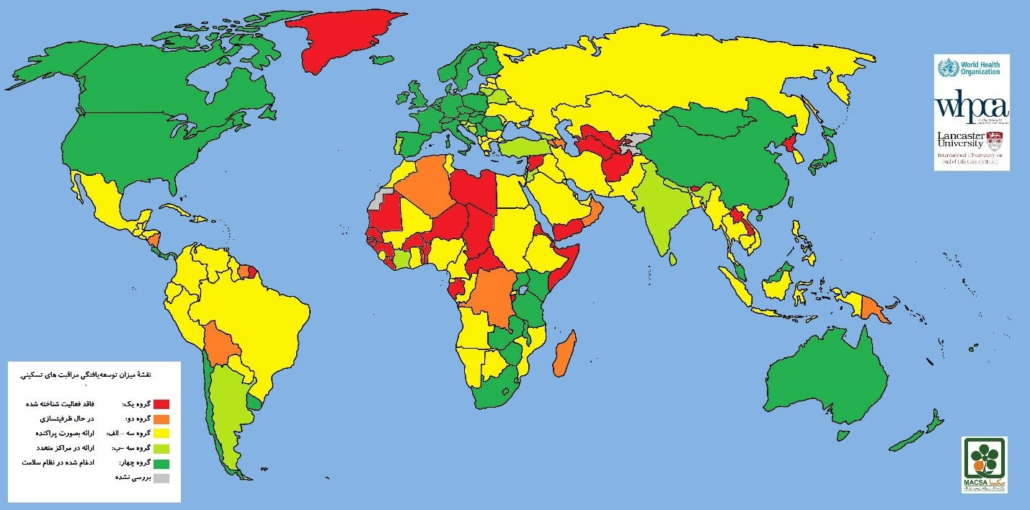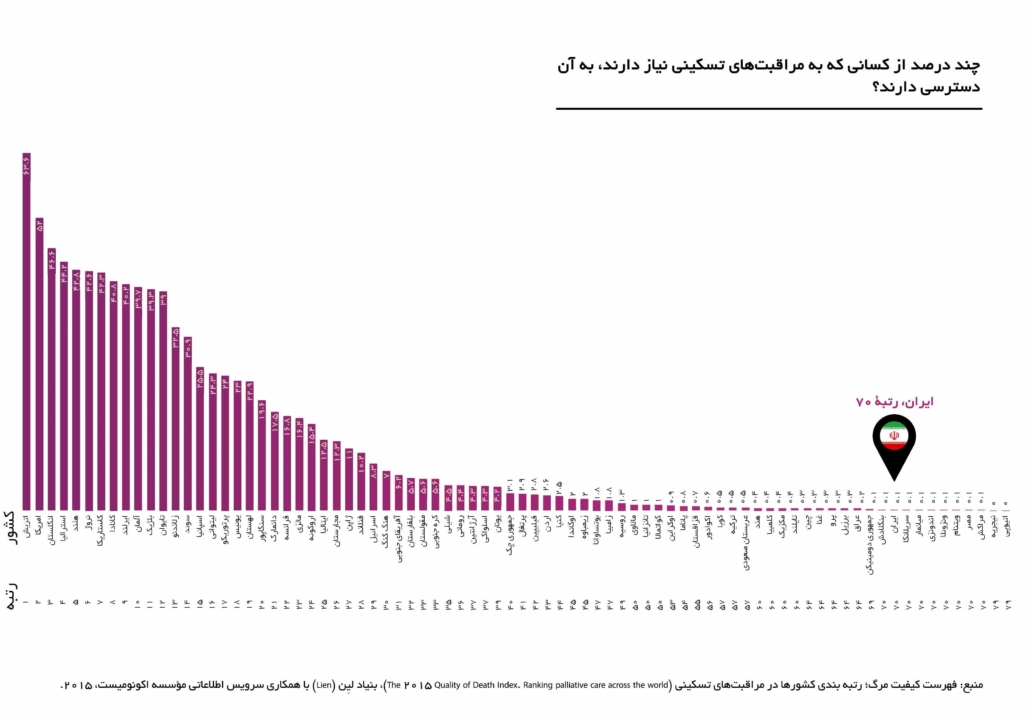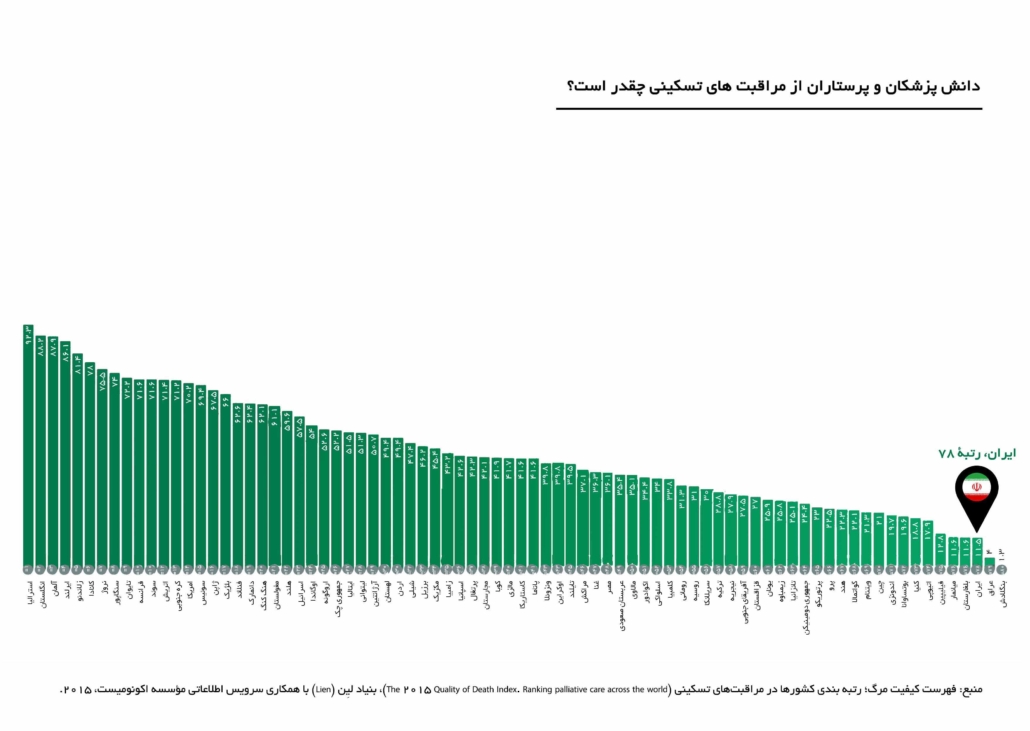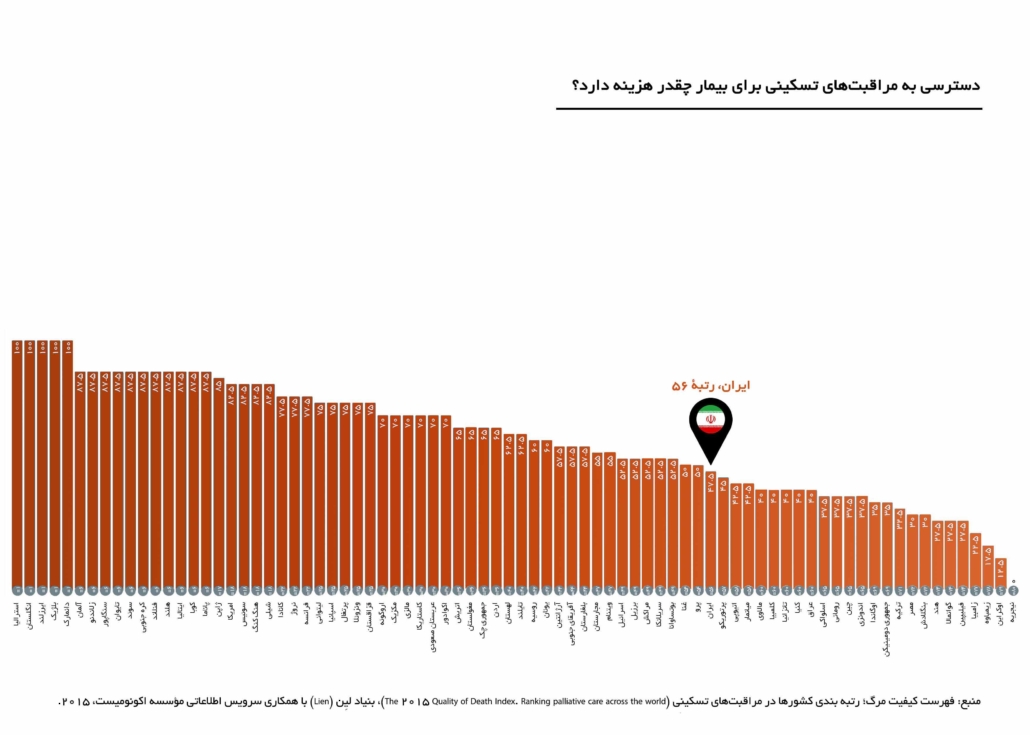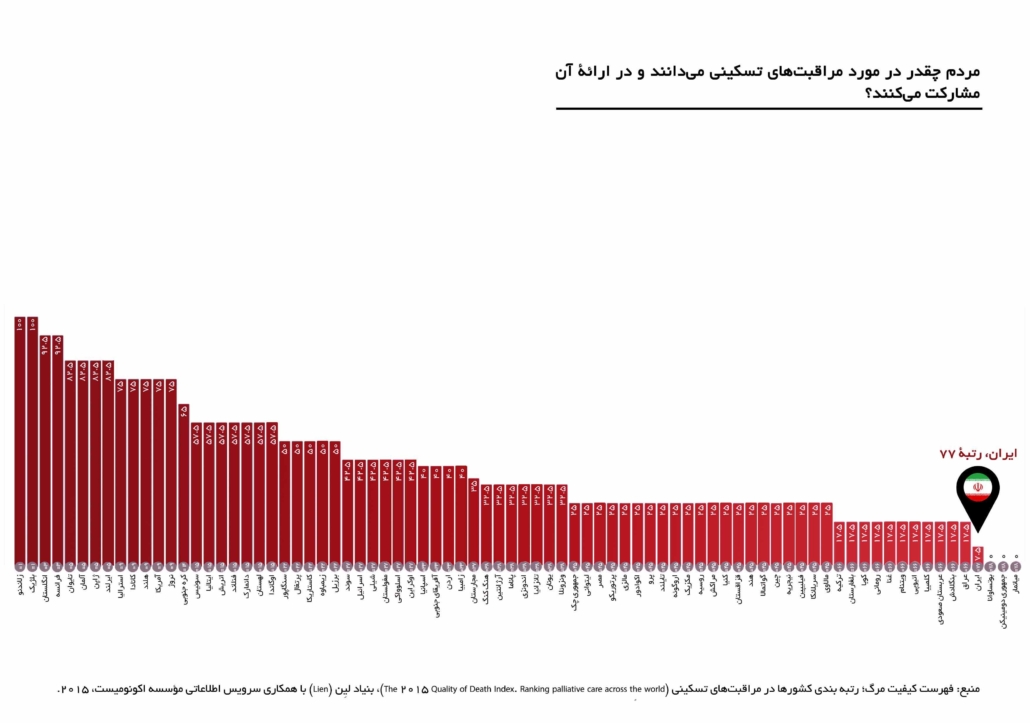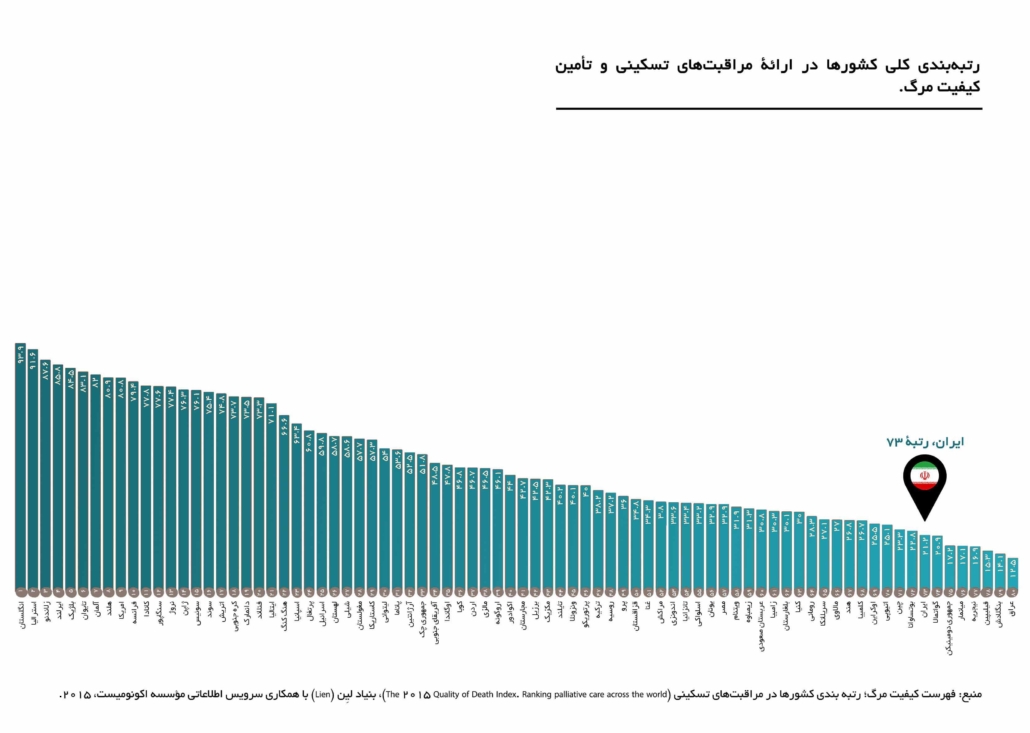The status of supportive and palliative care services in Iran
Currently, supportive and palliative care is not provided systematically in Iran. the status of supportive and palliative care in different countries have been reported by International Observatory on End-of-Life Care (Lancaster University, UK) and the World Health Organization. According to the results, the countries of the world are divided into 4 main groups based on the status of palliative care.
Group 1) countries without any known supportive and palliative care activity;
Group 2) Countries that are building capacity to provide supportive and palliative care though no service has yet been established;
Group 3) Countries with Isolated palliative care provision. This category of countries is divided into two subcategories:
Group 3. a) Isolated palliative care provision: patchy in scope and not well supported, mostly, donor-depended services, limited access to morphine, home based services are more common in these countries and specialized palliative education is not available.
Group 3. b) Generalized palliative care provision; There are adequate financial resources to provide care, adequate access to morphine, in some cases, there are some education and training opportunities available.
Group 4) Countries where supportive and palliative care is provided in the health system and its services are integrated with other health care providers. This category includes 2 subcategories:
Group 4a) Countries where hospice-palliative care services are at a stage of preliminary integration into mainstream;
Group 4b) Countries where hospice-palliative care services are at a stage of advanced integration into mainstream service provision.
This classification is made based on the following criteria:
- The coverage of supportive and palliative care in the country;
- The level of public awareness of supportive and palliative care;
- Access to opioids;
- Quality of supportive and palliative care specialized education and training;
- The cost of supportive and palliative care;
- Structure, level and settings of service delivery;
- Existence of national policies on supportive and palliative care;
- Existence of a comprehensive range of supportive and palliative care services;
- Coordinating supportive and palliative care with the curative treatment plan:
- Research status in the field of supportive and palliative care.
According to a report published by the World Health Organization (WHO) in 2014, Iran is classified under the “3-B” category. this indicates that, Iran’s status has improved compared to the previous evaluation period of 2006, when Iran was classified within Group 2.
currently, there are few supportive and palliative care centers in Iran, and there is no integrated system to manage and standardize the structure, operational processes, and training protocols for supportive and palliative care.
Iran’s status in various aspects of supportive and palliative care and the quality of death
According to «The 2015 Quality of Death Index. Ranking palliative care across the world, (published by the Lien Foundation in collaboration with The Economist Intelligence Unit in 2015), 80 countries were evaluated in terms of supportive care, palliative care, and quality of death.
Capacity to deliver palliative care
This index indicates the estimated percentage of people who receive supportive and palliative care at death compared to all those who need such services at the time of death. According to this assessment, the capacity to provide these supportive and palliative care in Iran is very small, so that only 1 of every 17 people who need this care at the time of death, benefits from the service.
Presence of specialized and professional human resources
There is a direct relationship between the presence of trained human resources in supportive and palliative care and the development of these services in each country. Supportive and palliative care is recognized and taught as a separate specialty in many developed countries. In Economists’ 2015ranking, among 80 countries were evaluated, Iran did not rank better than 78th among 80 countries in terms of the presence of the professional workforce for palliative care.
Affordability of supportive and palliative care
Governmental support and charitable activities facilitate access to supportive and palliative care for all classes of the society. Although Iran performs very poorly in providing palliative and supportive care in the absence of government support and insurance coverage, the country ranks 56th in affordability of supportive and palliative care among 80 countries.
This rank has been obtained thanks to the activities of charities and non-governmental organizations. These organizations may provide palliative and supportive services free of charge or fulfill other overlooked needs of the patients and their families.
The community engagement in supportive and palliative care
Iran ranks 77th in terms of the community engagement in supportive and palliative care. The link between the services and the community is shaped as a result of public awareness, social demand, voluntary activities and the cooperation of philanthropists. as the community awareness of these services increases, the desire and demand for palliative services increases, in parallel with the inclination for other forms of social engagement like charitable donations.
Overall ranking
In a country, the development of supportive and palliative care depends on government support, charitable activities, the presence of specialized workforce and public awareness. While most of the leading countries in the overall ranking are developed and wealthy countries known for their high social welfare, countries such as Mongolia, Panama, Uganda and Jordan have also been able to establish higher living standards for people with serious illnesses, and specifically for the cancer patients in recent years with the cooperation of government, people and professionals. Iran ranks 73rd out of 80 countries in overall ranking of supportive and palliative care and quality of death.

